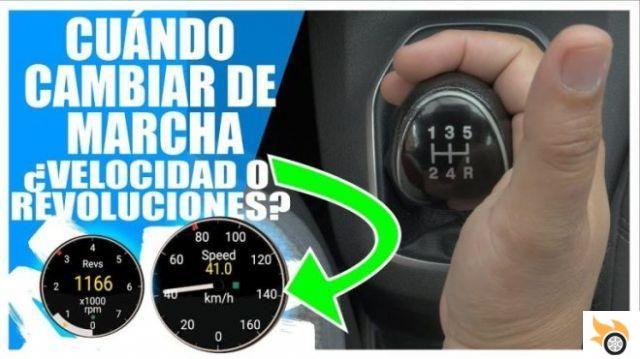 Article: Changing gears and revolutions in a gasoline engine
Article: Changing gears and revolutions in a gasoline engine
Introduction
Welcome to our article on gear shifting and revs in a gasoline engine. In this text, we will respond to the different search intentions that users have on this topic. We'll explore the proper RPM to shift the engine, the consequences of shifting at 3000 RPM, the recommended rev range to shift, the risks of lean driving, the exact timing to shift, top tips to change gear and what are the revolutions of a car and how to take advantage of them.
What is the proper RPM to make the changes to the engine?
The proper RPM to make engine shifts will vary depending on the vehicle and the type of driving. However, in general, it is recommended to change gears when the RPM reaches an optimum level to maintain good engine performance and efficiency. This is usually between 2000 and 3000 RPM, but it's important to check your vehicle's manual for specific information.
What are the consequences of shifting at 3000 RPM?
Shifting at 3000 RPM can have several consequences on the engine. For one, it can increase wear on internal components such as synchronizers and clutch discs. In addition, it can decrease engine efficiency and increase fuel consumption. On the other hand, shifting at 3000 RPM can provide quicker acceleration, but this can also result in more aggressive and less safe driving.
What is the recommended rev range to change gear?
The recommended rev range for changing gears may vary depending on the vehicle and driving conditions. However, in general, it is recommended to change gears when the RPM reaches approximately 70-80% of the maximum engine rev limit. This makes it possible to maintain a good balance between engine performance and efficiency.
The risks of efficient driving and the exact moment to change gear
Efficient driving, which involves changing gears at the exact moment, can have some associated risks. For one thing, if you shift too soon, the engine may run out of power and you may need to slow down. On the other hand, if gears are changed too late, the engine can run at high revs, which can increase fuel consumption and engine wear. Therefore, it is important to find the right balance and practice efficient driving in a safe and responsible manner.
Top tips for shifting gears and revving up
Here are some tips to shift gears efficiently and get the most out of engine revs:
- Know your vehicle: Familiarize yourself with the characteristics of your vehicle, such as the optimal rev range for changing gears.
- Listen to the engine: Pay attention to the sound of the engine to determine the right moment to change gear. An engine that works at high revs can indicate that it is time to change.
- Anticipate Shifts: If you know you're going to have to brake or accelerate, anticipate gear changes to maintain a smooth and efficient drive.
- Practice Efficient Driving: Learn how to use engine revs efficiently to save fuel and reduce engine wear.
Frequently Asked Questions (FAQs)
1. Is it bad to change gear at high revs?
It's not necessarily a bad thing to change gears at high revs, but it can increase engine wear and fuel consumption. It is important to find the right balance and change gears at the optimal time to maintain good performance and efficiency.
2. What is the recommended rev range for changing gears in a gasoline engine?
The recommended rev range for changing gears on a gasoline engine can vary by vehicle, but is generally between 2000 and 3000 RPM. Consult the vehicle manual for specific information.
3. How can I use engine revs efficiently?
To harness engine revs efficiently, it's important to know your vehicle, listen to the sound of the engine, anticipate shifting, and practice efficient driving. This will allow you to save fuel and reduce engine wear.
Conclusion
In short, gear shifting and revving in a gasoline engine are important aspects of efficient and safe driving. It is essential to know the recommended rev range for changing gear, as well as the associated risks and tips. By practicing efficient driving and using engine revs properly, we can improve the performance and efficiency of our vehicle.
We hope this article has been helpful and has answered your questions about gear shifting and revs in a gasoline engine. If you have any other questions or comments, feel free to leave them below. We would love to hear your opinion!
Until next time!
The Pistonudos.com team


























